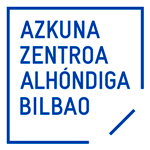
MARÍA MORALEDA GAMERO
PRESERVATION AND RESTORATION
Toledo, 1988. Degree in Painting Restoration at the Higher School of Conservation and Restoration of Madrid and BA in Art History at the Complutense University. Between 2011 and 2013 she obtained a grant for Paint Restoration at the Prado Museum and in 2014, at the FormArte of the Ministry of Culture. She has also worked in other prestigious institutions such as National Heritage, Casa de Alba Foundation or Historic Heritage Assets of the Community of Madrid. Since November of 2020 she forms part of the restoration workshop of the National Museum of el Prado.
She has intervened in important restorations; worth special mention is the Calvario de Van der Weyden in the National Heritage. She has collaborated in exhibitions such as El griego de Toledo (Museo de Santa Cruz, Toledo), El Hermitage en el Prado (Prado), De Caravaggio a Bernini (National Heritage) and Treasures from the House of Alba (Meadows Museum).
Share:
Towards the middle of the 19th century and almost simultaneously the first treaties of pictorial restoration in Italy and Spain were published. The birth of restoration as an autonomous discipline, separated from the pictorial practice with artistic ends, comes into play as a consequence of gradual specialization, the systemization of work and the application of modern criteria throughout an entire century.
The developed project consists in the research of the relations between Spain and Italy in so far as pictorial restoration. The exchange of ideas and practices among nineteenth century artists was constant and direct, and that, without a doubt had consequences in the world of restoration. These exchanges took place just as much with the Spanish living in Rome, out of whom we should highlight José de Madrazo and Juan Antonio Ribera, as with Italians who established themselves in Madrid, such as Manuel Napoli and Pedro Kuntz.
The last years of the 18th century and the first ones of the 19th century in Europe were convulsive due to the Napoleonic campaigns that destroyed much of the artistic heritage as a type of war trophy. The French interventions, spectacular and invasive, in emblematic works of Italian and Spanish heritage, raised distrust and criticism in both countries, which invites the thought of common sensitivities and that they were much more respectful with the original work.
The implantation of criteria and work methods in Spain seem to have a direct link with previous Italian procedures, such as the use of resin varnish in the pictorial touching up, or the use of plaster and glue as stucco for the gaps, of what Polero speaks in his treaty of 1853.
With the publication of the results there will be a larger diffusion among the professionals of restoration, as well as a contribution to Art History in a relatively unexplored field.
The research undertaken in the residence of the Spanish Academy took shape over the months of the stay. Diving deeper into the subject and the access to the archives of Rome opened different vias of investigation, with which I intend to publish various articles to be completed in Spain, some with a more specific focus on one of the studied persons.
The vast amount of information managed and the fact that it is a field that has not previously been studied, confirm that it is a topic sufficiently wide and complex to propose a broader study such as a PhD thesis. The documentation and inquiries obtained these months make up the base of this research and are an essential part of the process.
On one side, there was a detailed historic revision of the Italian bibliography dedicated to pictorial restoration in the nineteenth century that reveals a larger study of the history of restoration itself, if we compare it to the Spanish case, in quantity as well as specificness. The objective was to understand the Italian context in the pictorial restoration ambient, although it is a very diverse and complex panorama, and even more so if we widen the study to different regions of Italy. I also revised the Spanish publications, as previously mentioned, they are less studied, and future publications remain pending.
On the other hand, I revised other studies on Spanish artists in residence in Rome in the 19th century, mainly in the first decades, and their incursion into the field of pictorial restoration. We tried to follow the clues in the archives and other primary sources of written press. In the same way, I proceeded to study some of the Italian personalities who were especially interesting for our investigation, such as the restorer Pietro Palmaroli and his relation to the Spanish ambient in Rome.
The stay in the Spanish Royal Academy in Rome is without a doubt an unrepeatable experience where a series of extraordinary circumstances converge. While you have an opportunity to work on your own project, you live with other residents, beyond the bonds of friendship created, it implies constant learning. Interesting multidisciplinary debates are generated that open the mind towards other perceptions and sensitivities, especially enrichening when we are in such a heterogeneous group, diverse disciplines and at different vital stages and that we have followed different paths.
The Academy, as a place of reference for the Spanish and European culture, accommodates a multitude of professionals who do not hesitate to share their own experience, always generous and complicit.
And all of this happens in Rome, a city that is not possible to describe.
